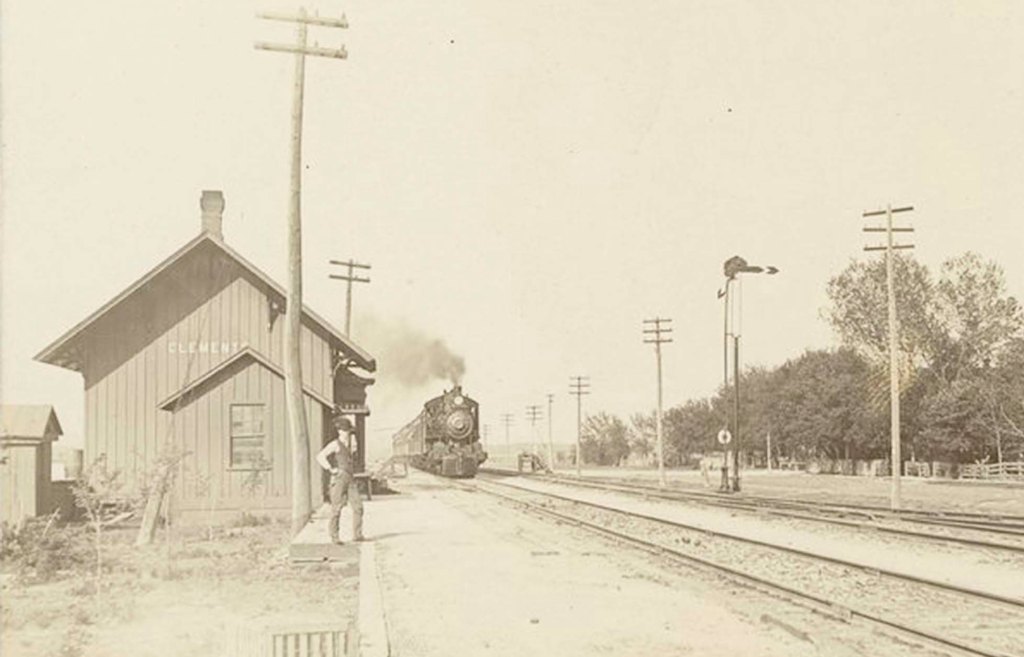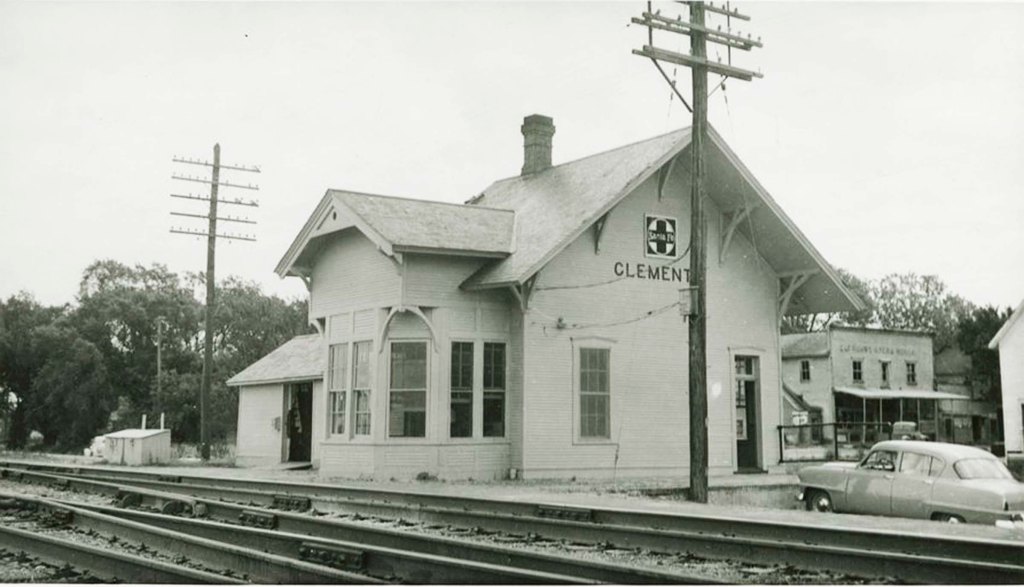[This is for the most part a recreation of Joseph L. Crawford’s bio in William G. Cutler’s History of the State of Kansas, Chase County, published in 1883 by A. T. Andreas, Chicago, IL.]
JOSEPH L. CRAWFORD, farmer, Section 23, Township 20, Range 6, Cottonwood Township, Crawfordville (Clements).

Coming to Chase County
Joseph L. Crawford was born on a frontier farm in Huron County, Ohio, May 3, 1826. In 1840, fourteen-year-old Joseph left the family farm and went to Plymouth, Ohio, where he was apprenticed to a wagon-maker for six years. In 1846 he moved to Evansport and set up business as a wagon-maker. In 1847, he married for the first time. In 1849, he moved to Lee County, Illinois, farming for ten years.
In the fall of 1859, he moved to Morris County, Kansas, staking a claim of 160 acres of land on what was the Kaw Indian Diminished Reserve. By the spring of 1862 he relinquished his claim.
Now 36 years old, he settled in Chase County, pre-empting 160 acres of land along the Cottonwood River, in Cottonwood Township. He build a log cabin and began improvements, eventually buying an additional 160 acres.
In early years, the Kaw and the Pottawatomie still crossed Chase County on their way to hunt buffalo. Prairie fires raged, hail poured forth from the heavens destroying crops, locusts were a plague, drought was a constant worry, rustlers roamed at large, and a man kept a pistol and rifle for his own safety and that of his family.
Death might come from a kick by a horse or more often disease, but there were good times too.
In 1874, the Chase Couty Leader newspaper was happy to report that:
“The Christmas dance given at Joseph L. Crawford’s at Hunt’s Station is pronounced a success. 33 couples are present. J. L. Crawford and Frank Barrington played violins and N. Patton and John Crawford call-off. The supper is pronounced “splendid” – Annie Patton and Hortense Crawford “looked after that”.”
Crawfordville
In 1881, the Atchison, Topeka and Santa Fe Railroad came to the Cottonwood River Valley, following the course of the river from Emporia to Florence and Peabody, then on to Newton.
In 1882 Crawford laid out the village of Crawfordsville, situated on the line, at a station first called Hunts Landing, or simply Hunts, then Silver Creek, then Crawford. Finally, in 1884, it was renamed Clements to honor an ATSF railroad official.

Spurred on by the railroad and the influx of farmers and ranchers, the little town grew. Within a few years it sported a bank, barber shop, blacksmith, dance hall, general store, grocery, library, livery stable, restaurant, and sawmill. Corrals were built to handle the arrival and departure of Longhorn cattle from Texas. But by 1885, Kansas quarantined Texas Longhorns and local stock ranchers switched to pure-bred herds.
The Flint Hills were quarried for limestone for town buildings and as well the Clement Arch Bridge that was built in the autumn of 1888.

Joseph L. Crawford
Joseph Crawford was an enterprising man. By 1883, William G. Cutler would report in his History of the State of Kansas:
“He operated the first threshing machine, the first sawmill and the first gristmill in Marion County. He has at present two steam sawmills, one located at Crawfordsville and the other on Cottonwood River, below Cottonwood Falls. Mr. Crawford has held the office of Justice of the Peace two years in Cottonwood Township. He has been married twice, first to Miss Annie Columbia, of Fort Wayne, Ind., March 13, 1847; she died May 29, 1871, leaving eight children, all now living. He married Miss Mary E. Watson, of Diamond Creek Township, December 29, 1871, by whom he has three children, all living.”
Neighboring towns grew up along the railroad, competing for settlers and business. Elmdale to the east and Cedar Point to the west, but time itself proved the greatest threat to the town of Clements. The depot remained until the 1950s, now it is gone. Clements is almost a Ghost Town, just a couple of homes and the gateway to the Clements Arch Bridge on the south side of the former community.

Note. Joseph L. Crawford died on November 15th, 1893 and is buried in the cemetery on the hill to the north of Clements.
Sources:
Miller, Phil (2010). “Cattle and Railroads – The Flint Hills Connection,” Symphony in the Flint Hills Field Journal. https://newprairiepress.org/sfh/2010/flinthills/4